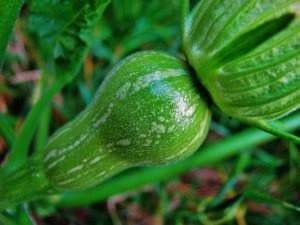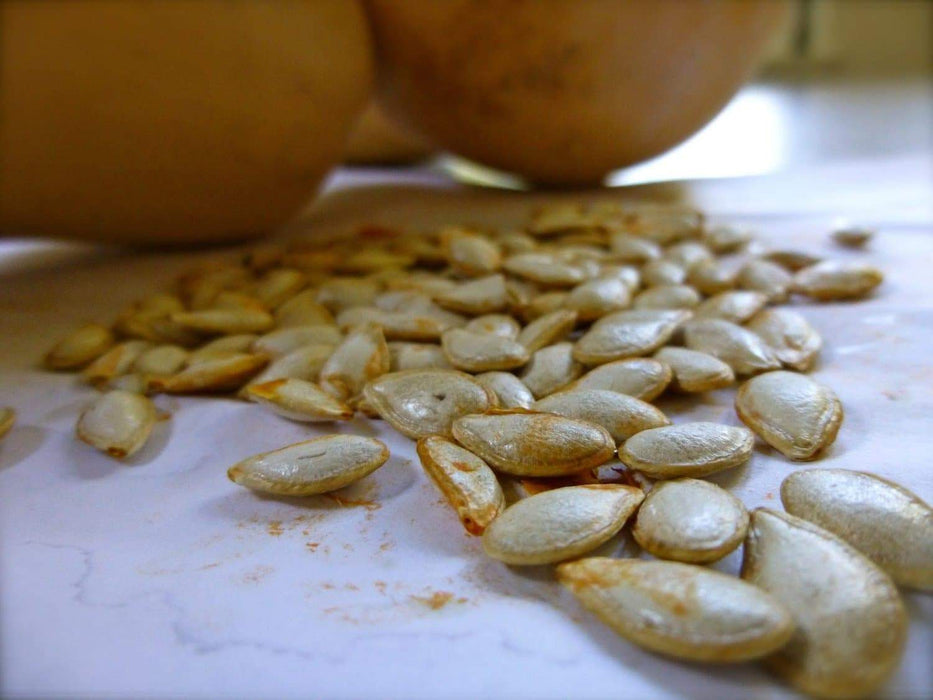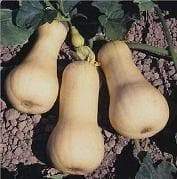
Winter Squash, Butternut Squash, Heirloom Seeds
Most orders are processed by the next day
Select your desired size and/or color from the available options.
Open Pollinated, Butternut squash is the sweetest winter squash.
Butternut is one of many different kinds of winter squash, with a distinctive pale yellow and pear-shaped fruit. Inside, the firm flesh is orange and distinctly sweet.
380 seeds per oz.
1,520 Seeds per 1/4 lb
This variety is one of the best butternut varieties for making winter squash pie or for cooking in stews and soups! 3-5 lb. fruits have dry yellow/orange flesh that has a rich, sweet flavor. Our family prefers these for pies instead of pumpkins! Vigorous vines produce abundant harvests of fruits that are fairly uniform with very straight necks. Winter squash plants take lots of room to grow. The vines grow very long and can be trellised successfully if garden space is a priority.
About Waltham Butternut Squash: Bob Young of Waltham, Massachusetts patiently cultivated this squash for years; his efforts resulted in a squash of uniform shape and a hard rind that keeps exceptionally well. Introduced commercially in 1977, it became an AAS Award winner in 1970 and continues to set the standard in butternut squash.
Waltham Butternut Squash Germination: Gardeners with short growing seasons may want to start their squash seeds indoors a month before the last expected frost. Since squashes do not take well to transplanting, peat pots are the best option. Plant two seeds per pot, later clipping off the weaker seedling. Harden the seedlings by exposing them to the weather for several hours at a time during the week before transplanting. About a week after the last frost or when the soil temperature reaches an average of 60 degrees F, plant the seedlings in very rich soil 8-10' apart in rows 10-12' apart. Another option is to plant the seedlings in hills of two, 8-10' apart. To direct sow, plant the seeds a week after frost 1/2" deep, 3-4' apart and thin to 8-10' apart. For companion planting benefits, plant squashes along with corn but avoid planting them with potatoes.
Growing Waltham Butternut Squash Seeds: Since squash seedlings do not tolerate frost, provide protective coverings if cold weather threatens. Keep the soil moist at all times, but avoid getting the leaves wet as this can cause diseases such as rot or mildew. When the vines begin to develop, a layer of mulch will help conserve moisture and control weeds; mulch also will keep the squashes clean and protect them from too much soil contact. By midsummer, pinch off all the blooms to concentrate the plant's energy on the developing squashes. Waltham Butternut resists the squash borer.
Harvesting Waltham Butternut Squash: Squashes can be harvested as soon as the stem begins to dry and the skin becomes too hard to pierce with a fingernail. Because cold weather can damage squashes, they should be harvested before the first frost. Cut the stem with a sharp knife, leaving a 2-3" length." Do not carry the squash by the stem; if the stem breaks off, use it as soon as possible, since this causes the squash to deteriorate quickly. Cure the squashes in the sun or a dry location until the stem shrivels; do not wash the ones you intend to store. Waltham Butternut can be harvested while young as a summer squash in addition to being harvested when it reaches its full maturity; this squash stores very well and is one of the most popular squashes for baking.
Saving Waltham Butternut Squash Seeds: By the time the squash has been cured, the seeds are mature. Cut the squash open, remove the pulp and seeds, and rinse off the pulp. Put the mixture in a bowl of water to remove the remaining pulp; the good seeds will sink. Remove the good seeds and spread them out to dry for 2-3 weeks, stirring them at times to make sure they dry completely. Store the seeds in a cool, dry place for up to 4 years.
Detailed Waltham Butternut Squash Info: Cucurbita maxima. Annual. 100 days. 380 seeds per oz. 12-18" height. 4-6' spacing. Produces pale tan squashes that average 3-6 lbs.
Materials: pies instead of pumpkins,garden,heirloom,soup,stew,bread,cake,cooking,recipes,store,well,Squash,Winter
LET OUR CUSTOMER SPEAK FOR US

![[Seeds] - Caribbeangardenseed](http://caribbeangardenseed.com/cdn/shop/files/gift-card-gift-card-1_1024x1024_dfa857db-9150-4315-a362-7f0bb3fb9c47_60x28.png?v=1703978838)



